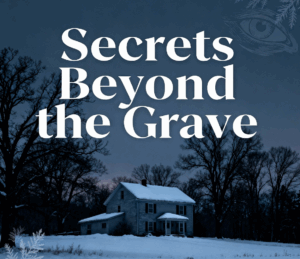
When crime, isolation, and code meet on a snowbound prairie, something unexpected emerges—a human story that breathes between the evidence lines. That was the guiding spirit behind Secrets Beyond the Grave: Frozen Secrets, the prologue episode that began with a file folder marked Ethelbert, Manitoba and ended as a multilayered exploration of truth, bias, and survival buried beneath the ice.
Building the Case Into Code
The idea started like real detective work—with archival materials, court reports, and a museum’s worth of notes. But to bring it to life in Twine and SugarCube, the design had to translate complex reality into interactive storytelling. Every route was mapped like evidence on an investigator’s wall: ethical and unethical pathways, enlightened and unenlightened ones, each leading players toward radically different understandings of the same tragedy.
What began as a reconstruction of two lives—Elsie Steppa and her nephew Clarence Thornton (known locally as Harry)—became an exercise in curation. In Frozen Secrets, Birch the curator acts as both narrator and conscience, reminding players that evidence isn’t just about finding proof—it’s about what you choose to see, ignore, or distort in your rush to make sense of chaos.
Narrative Forensics
One defining mechanic was the frozen body choice. Players who demonstrated patience and scientific technique by thawing Harry’s body slowly were rewarded with forensic revelations—fingerprints that exposed his hidden identity as an Ontario fugitive, Clarence Thornton. Those who used brute force destroyed the prints and lost access to key truths. The game encourages careful reasoning over impulse—something both journalists and detectives understand too well.
The same principle applied to interrogation scenes and red herrings. Multiple suspects—each with plausible motives and conflicting testimony—reflected the noisy complexity of real investigations. In one route, compassion opens doors; in another, bias closes them forever. Each decision is a quiet note in the symphony of human psychology that drives Frozen Secrets.
Coded Empathy and Ethics
KlueIQ’s creative process began with a single ethical rule: respect the real people whose stories inspired the work. Every non-central name was changed. Violence was suggested, never sensationalized. Birch only trolls unethical or sloppy detective work—not victims, witnesses, or the community. That moral compass shaped the tone of both writing and gameplay; even “booby endings” serve as darkly comic cautionary tales about taking investigative shortcuts.
Programming the Human Factor
Technically, the game was built around conditional macros in SugarCube—a structure of choice variables, ethical meters, and a dynamic evidence board. Clues unfold visually, encouraging players to build mental maps of relationships and motives rather than collecting objects. Each playthrough generates a different version of truth; every route asks how curiosity becomes conviction.
Truth Beneath the Ice
More than a whodunit, Frozen Secrets asks a deeper question: how do stories freeze over time—and who dares thaw them carefully? At the core, it’s a story about empathy as an investigative tool. By the end, players aren’t just solving a murder; they are confronting the human impulse to simplify what should remain complicated.
The snow may cover everything in Ethelbert, but Frozen Secrets reminds us that time has its own way of melting lies.